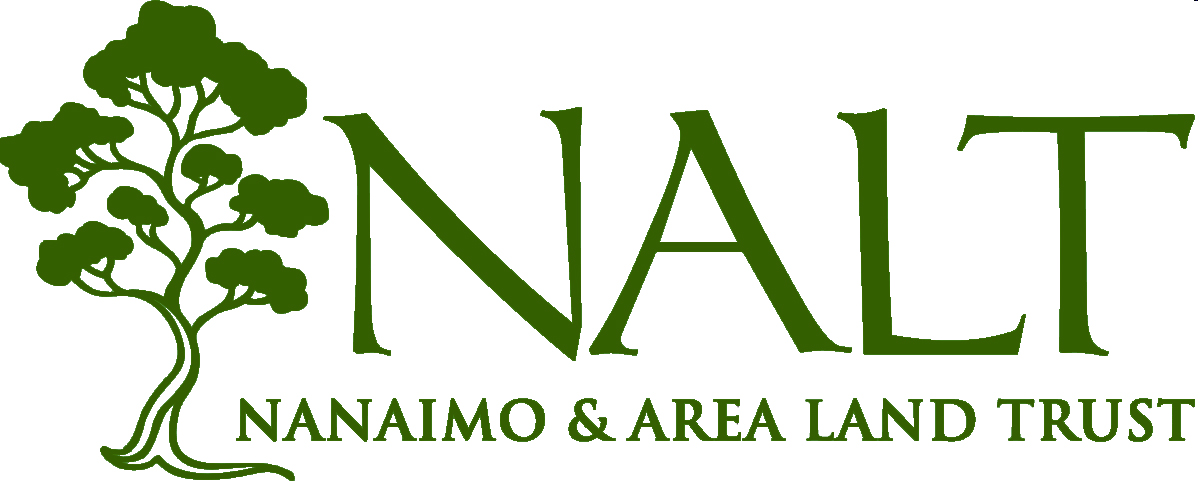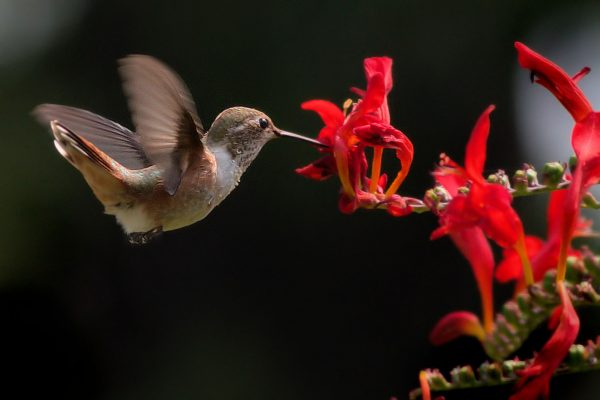Non-Native (or Exotic) plants are those plants in your garden that do not occur naturally to the area. Most of our favourite flowers in the backyard garden are not native: Tulips, Daffodils, Lilac, Magnolia, Japanese Pieris, Lavender, Camellia, Pansies, and Begonias are just a few examples of flowering plants that do not naturally grow in Eastern Vancouver Island. Others include fruit and vegetable plants as well as herbs such as oregano or dill, raspberry canes, pear trees, or bean plants.
Some non-native plants may be from the same family or even genus as a native plant, but are not native species – for example there are many hybrids of rose that are related to our native Nootka or Baldhip roses. Most plants that you buy from your neighbourhood garden nursery are non-native.
So … are non-native plants beneficial to pollinators?
This is a complicated question. Many non-native plants are not attractive to native pollinators at all. Some have been so hybridized that they are not beneficial to pollinators; for example, most ‘double hybrids’ of flowers, such a hollyhocks, have been bred to have so many extra petals that pollinators cannot access the pollen and nectar in the flower.
There are, however, some non-native flowering plants that are quite attractive to some native pollinators. These plants can be helpful when planted in a pollinator garden if they are early bloomers or have extended bloom times.
Research has shown that non-native flowering plants do not support as great a diversity of pollinator species as native flowering plants. This is because some pollinators are specially adapted to specific types of native flowers.
Best for biodiversity = native plants
Keeping track of pollinators and non-native flowering plants
The Nanaimo Area Pollinator Paradise project is not asking you to get rid of all your favourite familiar garden plants in the quest for creating pollinator habitat. We only ask that you add in some native species to your garden beds, and perhaps in the process develop some new favourites.
If you have some non-native plants that are an absolute favourite, you can support our project by doing a few short 10-15 minute pollinator censuses of the plant while it is blooming, and noting what pollinators you see foraging at your plant. Observations can be submitted to the iNaturalist project page ‘Mid Vancouver Island Pollinators’.
Below is a short list of exotic plants that are known to be attractive to some pollinators and are considered beneficial because of their early or long bloom times.

Heather (Calluna vulgaris): This evergreen shrub flowers with a profusions of purple or white bell-like flowers. Varieties that bloom in late winter/early spring are most beneficial to early emerging pollinators such as queen bumble bees. Blooms February to April, depending on variety.

Japanese Pieris (Pieris Japonica): This is a medium sized evergreen shrub recognized by its bright reddish-pink new growth and tendrils of white bell-like flowers. This is another early spring bloomer that is beneficial to early emerging pollinators like bumblebee queens. Blooms March to May. Photo taken at Tofino Resort and Marina, courtesy of © keyaporteous at iNaturalist.

Catmint (Nepeta): This is a perennial herb of the mint family, with billowy foliage and long blooming sprays of blue-purple flowers. It is especially attractive to generalist pollinators like bumblebees. Blooms May to September.

Lavender (Lavendula): A hardy perennial that forms dense mounds of foliage. Mostly attractive to the non-native honeybee but also attractive to some native pollinators. Blooms June to July. Photo taken at Sequim, Wash. courtesy of © Luis Beltran.

Borage (Borago officinalis): This is an annual herb that is easy to grow from seed. Blooms June to September and is especially attractive to bumble bees and the non-native honey bee. Photo taken at Gabriola Island, courtesy of © Cassidy Miller at iNaturalist.

Oregano (Origanum vulgare): A perennial herb great to use in cooking, the clustered pink or white flowers are attractive to many pollinator species. Blooms June to September. Photo taken in Nanaimo, courtesy of © jey42 at iNaturalist.

